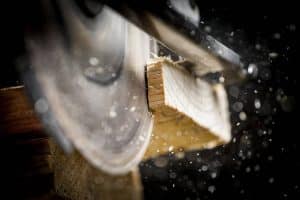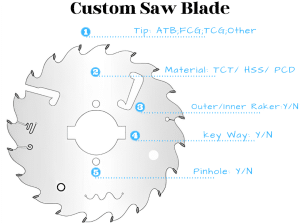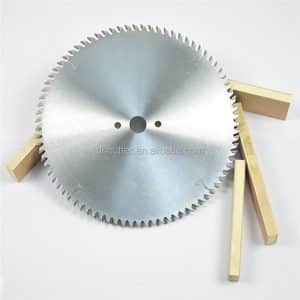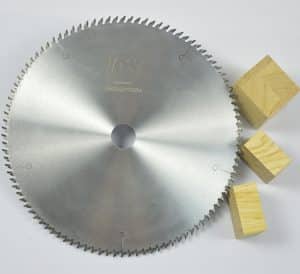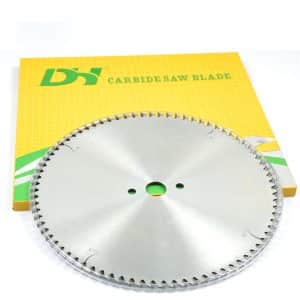Circular saw blades are an essential tool for many projects due to their versatility, from carpentry to construction. Different types of circular saw blades are designed for different materials and tasks, such as wood, plastic, metal, concrete, and masonry.
Choosing the right circular saw blade for your project is important because the right blade can lead to better performance and ensure your safety during operation.
In this article, we will focus on the 5 types of circular saw blades used in woodworking. After reading, you can decide which one is best for your woodworking project needs.
Ripping Circular Saw Blade
Rip blades or rip cutting blades are designed to produce straight, long cuts along the grain of the wood. Typically, they have fewer teeth than crosscut blades (approximately 16 to 40) and have deep grooves for effective removal of wood chips and sawdust.
The teeth of the ripping blade have a shallow rake angle to prevent the blade from grabbing the workpiece during operation. Tear cutting blades require faster cutting speeds, resulting in rough cuts. Using a ripping blade for cross-cutting is not recommended as it can result in poor cut quality and lead to kickback.
Crosscut Circular Saw Blade
As opposed to ripping blades, crosscut blades or crosscut blades are great for cutting against the grain of the wood. They have more teeth (approximately 60 to 80) and shallower gullets, making them ideal for cutting solid wood such as hardwood and softwood.
Crosscut blades produce extremely clean, smooth cuts with less tearing. They have a steeper rake angle for a more aggressive, smoother cut at low speeds. Also, do not use a cross-cutting blade for tearing.
Finishing Circular Saw Blade
As the name suggests, finishing blades are designed to make ultra-clean and precise cuts on certain parts of a workpiece that will be visible after the project is completed. They usually have at least 80 teeth and a small rake angle to ensure a smooth cut and protect the workpiece. Finishing blades are ideal for cutting veneer, plywood, laminate and hardwood.
Plywood Circular Saw Blade
Due to its cross-grain design, plywood is very stable even with temperature changes. However, it is also prone to peeling and chipping when cut. As a result, plywood blades typically have over 40 teeth, and their tooth geometry (alternating top bevels) is designed to make good cuts in materials such as plywood, MDF, and particleboard. Minimize chipping.
Combination Circular Saw Blade
Combination blades are sometimes called universal blades. They are designed to tear and transverse at the same time. With the combination blade, we don’t need to switch blades when changing the cutting direction.
The combination blade also combines flat and alternating top helical teeth to ensure performance. Flat teeth cut as fast as a rip, while alternating top bevel teeth produce clean, precise cuts like a crosscut. However, for more specific tasks, dedicated rip or cross-cut blades are recommended.
Different types of saw blades have different processing capabilities and cutting performance, and the materials suitable for cutting are also different. Saw blades should be selected based on actual project needs.
The selection of carbide saw blades is related to many parameters and seems complicated. But it’s actually quite easy as long as you find the right professional supplier.
So if you are still hesitating about what type of saw blade to choose for your woodworking project, please leave a message and contact us for more details. Our company has specialized in the production of cutting tools for more than 24 years and has rich experience in providing products with high quality and good price.
